Hockey
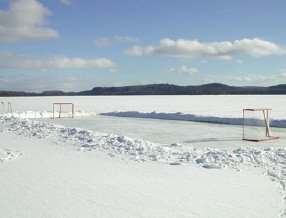
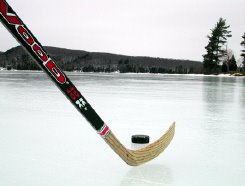
During this time, periodically the lake would freeze before the snow would fall. During these rare instances, my friends and I would put a “boom box” in the middle of the lake and play a lake-wide game of tag. The sound would carry across the whole lake. Under cover of darkness, with no place to hide, we would chase each other for miles to the sound of the music. I remember being able to hear the ice crack. The crack starting somewhere in the dark distance and carrying toward you like a frozen earthquake.
Hockey was an integral part of my life. From age four until age 29, hockey was defining. Recently, after a 25-year run and a 14-year absence, I started to play hockey again. As I sat in the locker-room that first night back, I stared in awe at the Kevlar-shin pads and the heat-formed skates. Where were the time-honored garter-belts?
I think the guys in the locker room thought I was staring at other things.
But my how times have changed. A little hockey equipment history:
The first skates probably came from 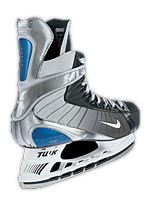
I recently purchased skates that were baked onto my feet. When I was young, we used to soak our skates in water and then put them in the oven in order to form fit them. Today, you go to a skate shop where they measure and fit a plastic-based skate, they put the skate in a custom oven, you fit the skate on your foot and sit for 15 minutes. The skate forms around your foot.
Before 1928, some players wore headgear for looks -- and it wasn't always helmets that the players put on.
Going without a helmet was a dangerous thing to do. Countless injuries could have been avoided and more than a few hockey careers wouldn't have ended so early, if all players had worn helmets. It wasn't until the 1970s that the NHL created a rule that any players signing on for the NHL after June 1, 1979, had to wear a helmet. Those already playing were allowed to make their own choice about whether or not to wear a helmet. Craig MacTavish, of the St. Louis Blues, was the last bareheaded NHL player, skating his final season in 1995-1996.
Hockey pucks weren't always made of black rubber like they are today. The early pucks were probably balls, but other objects were also used, such as stones, lumps of coal, or frozen cow or horse poop. Wooden pucks were used for many years. Mothers sometimes put hot baked potatoes into their children's skates so that the skates would be cozy and warm when the children reached the rink or pond. The potatoes were not thrown away. They eventually froze and were used as pucks.
Nets
The first hockey goal didn't have a net at all. The goal was just two rocks placed on the ice at each end of the rink. Eventually the rocks were replaced by two posts. As early as 1896,
The first hockey sticks were carved by Mi'kmaq natives of
The English Governor General of

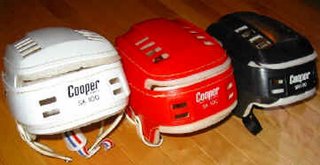


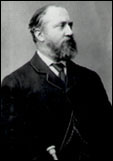

0 Comments:
Post a Comment
<< Home